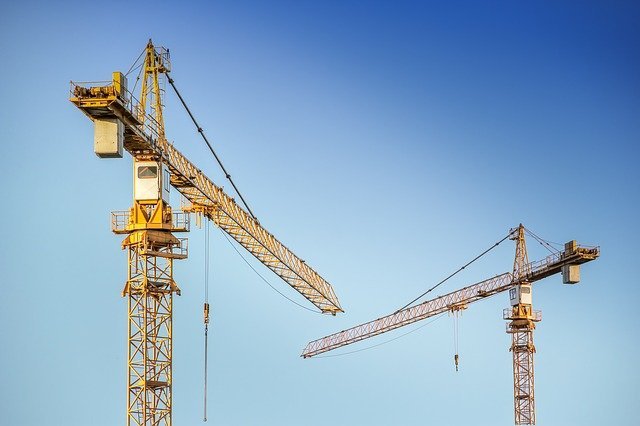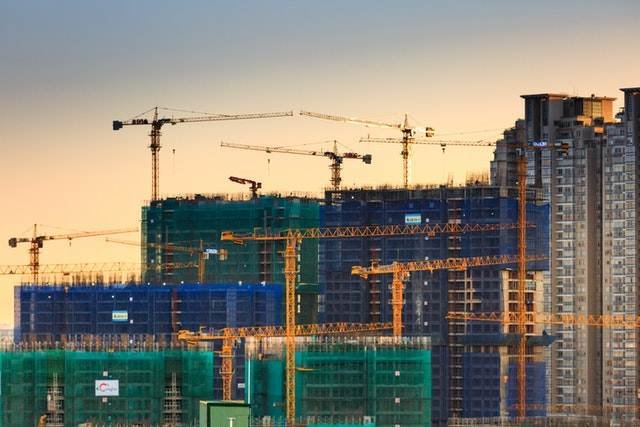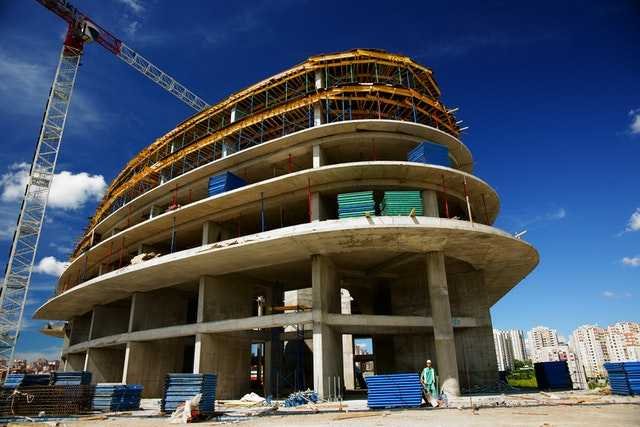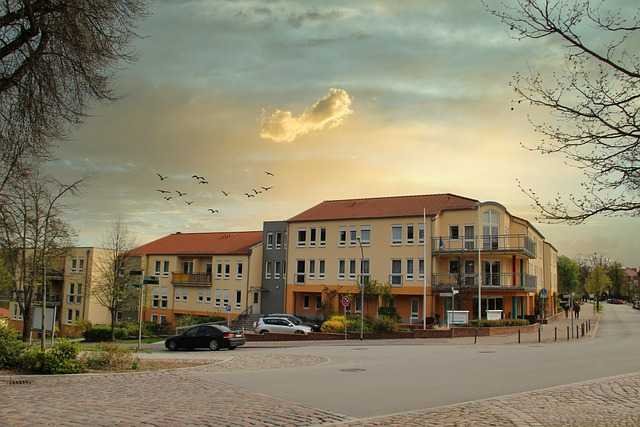Multifamily Construction Loans from Banks, HUD, Life Insurance Companies, and Private Lenders
When it comes to multifamily construction loans, borrowers have a variety of options, including bank loans, HUD multifamily construction loans, life insurance company loans, and hard money construction loans.
Bank loans and hard money loans are perhaps the most common, while loans from HUD’s 221(d)(4) non-recourse multifamily construction loan program being perhaps the most desirable. HUD also finances senior living construction through its 232 loan program.
For highly qualified borrowers, typically institutions, life insurance companies also offer construction loans with excellent terms, though these are generally reserved for large, Class A apartment developments.
CMBS loans are technically available for multifamily construction but are also quite rare except for large institutional deals. Fannie Mae and Freddie Mac multifamily do not generally offer multifamily construction financing, though some of their programs can be utilized for light property rehabilitation.
In this complete guide to multifamily construction financing, we’ll discuss the interest rates for multifamily and apartment construction loans, the difference between recourse and non-recourse loans, detail the terms for each of the major types of loans available, and review the top multifamily construction lenders serving the market today.
General Apartment Construction Loan Rates and Terms
General apartment construction loan options include:
Bank Loans: Bank construction loans can be structured as either standalone short-term bridge loans with terms of 1-3 years or short-term construction loans that automatically convert to longer-term financing (think 5-10 years) after the construction period is complete. Leverage typically goes up to 70% LTV/LTC, and amortizations are typically 20-25 years. Many banks offer interest-only (I/O) loans during the construction period.
HUD Multifamily Loans: The HUD 221(d)(4) loan program offers fixed-rate, fully-amortizing, non-recourse loans with terms of up to 40 years following a 3-year, interest-only construction loan period, for a total loan term of 43 years. These FHA multifamily construction loans are available for independent living facilities without assisted living care, as well as for eligible student housing properties. Through its HUD 232 program, HUD also offers construction loans for senior living properties, including assisted living, skilled nursing, memory care centers, and intermediate care facilities.
Life Company Loans: Life company loans are perhaps the hardest apartment construction loans to get, but they offer excellent rates and terms, with non-recourse loan terms up to 40-years. These loans are generally structured as a construction-to-permanent loan, so the construction loan “rolls over” into a permanent loan once construction is complete.
Hard Money: Hard money construction loans are typically available from more adventuresome lenders, with LTVs/LTCs typically going up to 65%. Rates are high, often ranging from 10-18% (fixed or floating-rate), with terms usually ranging from 12-24 months. Loans are also typically interest-only, requiring a large balloon payment at the end of the loan term. Borrowers will need to either sell the property or refinance it once the loan period is complete.
Recourse vs. Non-Recourse Multifamily Construction Loans
When it comes to multifamily and apartment construction financing, loan recourse provisions are a big deal. If you take out a recourse multifamily construction loan, your lender can attempt to repossess your personal property if you are unable to repay the loan. In contrast, if you take out a non-recourse loan, the lender can only attempt to repossess the building project they are financing. Due to the risk of construction financing, the vast majority of construction loans are full-recourse loans.
However, some loans, like the HUD 221(d)(4) and HUD 232 programs, as well as life company loans, are generally non-recourse, though these are exceptions to the rule. In many cases, construction loans will have a “burn-off” recourse provision, meaning that the recourse provisions “burn-off” as the project is completed, turning a recourse loan into a non-recourse loan over time.
It should be noted that even non-recourse loans come with “bad boy” carve-outs, which make the loan recourse should the borrower engage in “bad boy” behaviors, such as committing fraud, lying on a projects profit and loss statements, or embezzling money from the project. However, some loans have non-recourse carve-out provisions for very minor issues, such as turning in paperwork late.
This is why you, as a potential borrower, should always have a highly experienced real estate lawyer examine a loan’s carve-out provisions before signing on the dotted line.
Prospective Bank Multifamily Construction Loan Terms
Bank construction loans are ideal for projects in major metropolitan areas, as well as deals that may need to close faster than HUD or life companies will allow. Banks, like HUD, generally want at least one or more key principals to have significant multifamily development or management experience, and will likely have significant net worth requirements for the borrower/loan sponsor.
Size: $500k to $50 million+
Maximum LTV/LTC: 75%
DSCR: 1.20x+ required
Term: Up to 30 years
Amortization: Up to 30 years
Interest Rates: Fixed and variable rate options, interest-only (I/O) loans also available
HUD 221(d)(4) Multifamily Construction Loan Terms
The HUD 221(d)(4) loan program offers some of the. industry’s most competitive rates and terms, as it offers 40-year, fixed-rate, fully amortizing with an additional 3-year interest-only construction period. Unlike what some may think HUD 221(d)(4) loans are available for both market-rate and affordable properties.
However, these loans are an even better choice for affordable housing developers, as they offer higher leverages and lower debt service requirements for properties with a certain percentage of affordable housing units, as well as those utilizing the HUD Section 8 or Low-Income Housing Tax Credit (LIHTC) programs.
Loan Purpose: Building or substantially rehabilitating multifamily properties.
Size:
$4 million to $100 million+
Loans as little as $1 million- $2 million may be extended in certain circumstances
Most loans are $5 to $15 million+
Terms: Up to 40 years for new construction or substantial rehabilitation, with an up to 3-year interest-only (IO) construction period.
Sponsorship: Loan sponsors or key principals (KPs) must have a combined net worth, excluding their primary residences, of at least 100% of the entire loan amount. They may also need to have 10%+ liquidity.
Maximum LTV:
85% LTV for market rate
87% LTV for affordable properties
90% LTV for LIHTC properties
DSCR:
1.20x for market rate
1.15x for affordable properties
1.11x for LIHTC properties
Term: Up to 30 years
Amortization: Most loans are fully amortizing
Interest Rates: Fixed-rate
Third-Party Reports:
HUD-Compliant Multifamily Appraisal
HUD-Compliant Market Analysis (Market Study)
Architecture Plan & Cost Review
Engineering Report
Environmental Assessments, including:
Phase 1 Environmental Assessment
Phase 2 Environmental Assessment (if contamination is discovered)
HUD-Compliant Seismic Report (in some regions)
Construction Monitoring Reports
HUD-Compliant Construction and Architectural Document Review
Capital Needs Assessment (CNA) Report (only for substantial rehabilitation)
Hard Money Multifamily Construction Loan Terms
Hard money multifamily construction loans are the easiest to get, but have the highest rates and the least desirable terms. Some developers turn to hard money due to credit or legal issues, while others do because they have difficulty finding a high-net-worth sponsor for their project.
Borrowers looking to financing a construction project with hard money should be extremely careful to make sure that their project is build on-time and on (or under) budget, or they could face so much interest that it makes refinancing to a permanent loan, bridge loan, or mini-perm loan nearly impossible.
Size: $500k to $5 million+
Maximum LTV: 75%-80%
Loan Term: 6-36 months
Interest Rates: Generally 12-20%
Origination Fee: 3-5%
Interest Rates: Fixed and variable rates available, interest-only (I/O) options available
Life Company Multifamily Construction Loan Terms
Multifamily loans from life insurance companies are perhaps the hardest to get, due to the fact that there are only 60-70 major life insurance lenders in the U.S., and only a small portion of them offer construction financing. However, if you have a great deal, with great sponsorship, and your project is consists of Class A apartments in a major metropolitan area, some life companies are willing to offer long-term, low-cost, construction-to-permanent loans. Sometimes, loans are floating-rate during construction and then roll into fixed-rate permanent loans after construction is complete.
Size: $1 million - $100 million+ (most loans are $5 million and above)
LTV: 65-70%
Loan Term: Up to 40-years fixed or floating-rate
Recourse: Loans are generally, non-recourse, recourse may “burn-off” during the construction period
Interest Rates: From 4.5%
Interest Reserves: Minimum, depends on lender
HUD 232 Senior Housing Construction Loan Terms
The HUD 232 loan program is perhaps the nation’s premier loan program for the construction and substantial rehabilitation of healthcare properties for senior citizens. The HUD 232 program offers extremely long-term, low-cost, non-recourse financing for a wide array of property types.
In addition to its core 232 loan program, HUD also offers the HUD 232/223(f) loan program designed specifically for the purchase or refinance of “as-is” senior living properties.
In general, these loans are not intended for independent living communities (such as 55+ apartment complexes) without a significant healthcare component, though some independent living units are typically allowed.
Loan Purpose: Construction or substantial rehabilitation of senior living properties, including assisted living centers, nursing homes, memory care facilities, and intermediate care facilities.
Loan Size: $2 million to $100 million+ (average loan is $7.6 million)
Terms: Up to 35 years or 75% of the project’s remaining economic life. Minimum 10-years.
Maximum LTV:
New Construction: For-profits: 75% LTV, Non-profits: 80%
Purchase: For-profits: 80% LTV, Non-profits: 85% LTV
Substantial Rehabilitation: For-profits: 80% LTV, Non-profits: 85% LTV
Calculated as the lesser of max. LTV or 90% of HUD eligible replacement costs
100% of the existing mortgage debt for borrower-owned properties or 90% of the “as is” market value of the property before rehab, whichever is less (95% for non-profits)
For purchase and substantial rehab, LTV is capped at 85% of the property’s purchase price or 90% of the market value of the asset before rehab (95% for non-profits)
These limitations also apply to independent living communities and skilled nursing facilities
DSCR: 1.45x min. DSCR
Amortization: Fully amortizing
Interest Rates: Fixed-rate
Duplex, Triplex, and Fourplex Construction Loans
Smaller multifamily properties, between 2-4 units, generally do not qualify for most of the loan programs listed above. This is due to the fact that, throughout the U.S., the industry standard for a true “multifamily” property is defined as a property with 5+ units, whereas 1-4 unit properties are considered residential.
In general, banks loans and hard money or private money loans are the only options for those looking to build a 2-4 unit property. While FHA and VA loans allow borrowers to purchase duplexes, triplexes, and fourplexes (pursuant to borrower qualifications and local and regional loan limits) they do not allow for the construction of 2-4 unit properties.
The Top Multifamily Construction Lenders of 2022
To fully understand your options when it comes to getting a multifamily construction loan, you should also know a bit about the top apartment construction lenders on the market today. As of 2022, the top multifamily construction lenders included Goldman Sachs, Wells-Fargo, Starwood Property Trust, Citigroup/Citibank, and KeyBank Real Estate Capital.
Goldman Sachs
Goldman Sachs is known for its investment banking prowess, but it also has a healthy multifamily lending practice. Goldman Sachs’ real estate finance division, the Goldman Sachs Real Estate Financing Group, is a leading full-service commercial mortgage lender, and provides mortgage loans starting at $5 million. Goldman Sachs also focuses on providing debt for condo developments, such as the $236 million condo construction loan it provided for the Brickell Flatiron development in 2019.
In addition to lending, the firm’s wealth management division also dabbles in real estate development, and recently itself scored a more than $270 million apartment construction loan from Wells-Fargo and U.S. Bank in November 2021. Goldman Sachs is led by CEO David M. Solomon.
2. Wells-Fargo
As one of the largest banks in the U.S., Wells Fargo is also one of the leading multifamily construction lenders in the country. In fact, since 2009, the company has ranked as the number one commercial real estate lender in the United States, as well as the country’s largest affordable housing lender. In 2022, the lender held over $160 billion of Fannie Mae and Freddie Mac multifamily loans on its books, and was also rated the number one commercial loan servicer in the nation. Wells Fargo is led by CEO Charles W. Scharf.
3. Starwood Property Trust
Starwood Property Trust is the largest commercial mortgage REIT in the U.S. and is another of the country's leading multifamily construction lenders. Since its foundation in 2009, the company has provided a significant amount of financing for multifamily properties, and its loan volume has grown significantly in recent years. In a press release, the company stated that it has $9.0 billion of available secured financing and corporate debt capacity, giving it lots of room to grow. In general, Starwood is positioned towards providing larger loan amounts, and generally finances loans from $40 million to $500 million, with terms up to 10 years. Starwood Trust is led by CEO Barry S. Sternlicht.
4. Citigroup/Citibank
Citigroup’s banking division, Citibank, is another one of the largest banks in the U.S., and has also carved out a space as an important apartment construction lender. In May 2022, Citibank led a group of lenders to provide $714 million loan for a Manhattan mixed-use construction project. Citigroup also has a strong affordable housing financing division, and, as a HUD MAP (multifamily accelerated processing) lender, provides affordable housing construction loans through the HUD 221(d)(4) construction and substantial rehabilitation loan program. Citibank is led by CEO Jane Fraser.
5. KeyBank Real Estate Capital
KeyBank Real Estate Capital is the commercial real estate lending division of KeyBank, is a top Fannie Mae DUS lender, a top Fannie Mae multifamily lender, and a top ten FHA/HUD LEAN lender. In 2021, KeyBank Real Estate Capital originated $3.4 billion of Freddie Mac multifamily loans, placing it as the number eight Freddie Mac apartment lender in the nation for that year. In February 2022, KeyBank provided a $69.8 million loan for the redevelopment of an affordable housing development in Tampa Bay, Florida. KeyBank is currently the 24th largest bank in the U.S., and is led by CEO Christopher M. Gorman.


















5+ unit multifamily financing options include bank loans, CMBS loans, Fannie Mae and Freddie Mac multifamily loans, hard money, and more.